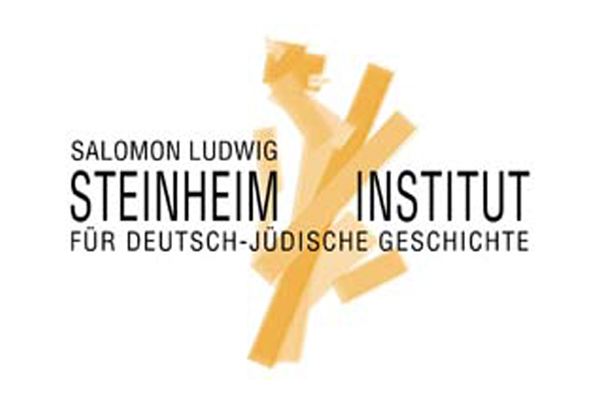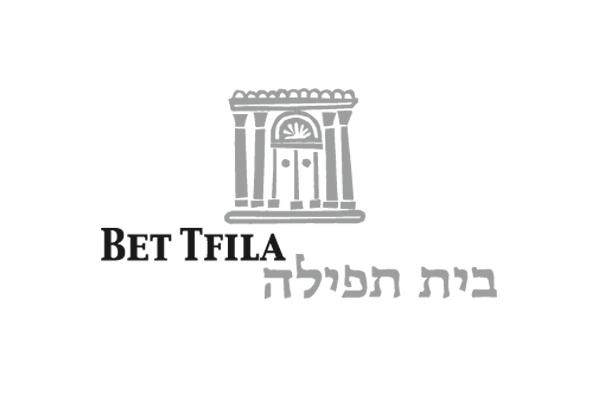Net Olam
Jewish Cemeteries Through the Lens of Antisemitism and Its Prevention
The approximately 2,400 Jewish cemeteries in Germany constitute a rich cultural legacy. In many communities, the cemetery is the only visible reminder of the Jewish history in the area. Jewish burial places are meant to last: “Bet Olam,” house of eternity. For Jewish communities as a minority in society, their preservation is an existential concern. However, numerous attacks have demonstrated that they are vulnerable places. These assaults are not directed toward individuals but rather toward the entire Jewish population – toward the living but also the dead. Although about forty attacks are recorded annually – the number of unreported cases is unknown – the desecration of cemeteries is rarely the subject of antisemitism research. This is where the collaborative project Net Olam comes in, with the aim of developing strategies to protect Jewish cemeteries.
The true extent of cemetery desecrations throughout Germany will be assessed for the first time using a comprehensive data collection, with a focus on the years after 1945. This information will build a foundation for further research and also help to develop recommendations for interventions and concrete strategies for protecting endangered objects (i.e. tombstones, cemetery fences and buildings).
A key goal of the project is to strengthen the many existing initiatives working to protect and preserve Jewish cemeteries. Together with local historians, teachers, and individuals interested in Jewish cemeteries, the project partners seek to build a wide, enduring network of expertise. This work aims to support exchange between related research initiatives and to promote these groups’ communication with the scholarly and political communities. The network will extend beyond the duration of the research project in order to take joint action against antisemitism.
The research project will be accompanied by an ongoing online publication of results that will encourage further research projects, such as comparative European studies. Above all, this online presence will communicate the research results to the wider public and thus provide the impetus for continually protecting Jewish cemeteries as an important part of Jewish cultural heritage.
The collaborative project is divided into three subprojects:
Project leader: Dr. Cordula Lissner
Research associate: Harald Lordick
In the subproject Desecration of Jewish Cemeteries in Germany: Systematic Investigation, Analysis, and Development of a Prevention Network, the Steinheim Institute will research attacks on Jewish cemeteries and evaluate references to extreme right-wing discourses. This project seeks to offer the most complete survey possible of antisemitic attacks until the present day by utilizing archival research, analysis of large digital newspaper corpora, and input from experts in the field (Citizen Science).
Project leader: PD Dr.-Ing. Ulrich Knufinke
Research associate: Dr.-Ing. Katrin Keßler
In the subproject Commemorating, Cautioning, Learning - Jewish Cemeteries as Places of Remembrance, Bet Tfila - Research Unit for Jewish Architecture in Europe at the Technische Universität Braunschweig investigates the role and potential of Jewish cemeteries as part of a topography of remembrance. This subproject considers existing models that incorporate Jewish cemeteries into educational work as extracurricular learning and memorial sites. These findings will help to develop recommendations for the future.
Project leader: Dr. Thomas Gunzelmann
Research associate: Elisabeth Singer-Brehm, M.A.
The Bavarian State Office for Historic Preservation (Das Bayerische Landesamt für Denkmalpflege, BLfD) will lead the subproject entitled The Desecration of Jewish Cemeteries in Bavaria - Patterns of Damage, Scope, Historical Context, and Analysis Through Case Studies. This research examines the concrete consequences of desecration for existing gravestones and the microhistorical context of these events. The patterns of damage will be cataloged in an innovative online database; this will be the first time that information on the type, quality, and scope of damage to Jewish cemeteries will be available as statistically analyzable data. The subproject will cooperate closely with the project Recording Jewish Gravestones in Bavaria, also initiated by the BLfD, in order to document the approximately 80,000 gravestones across the 124 Jewish cemeteries of Bavaria.
Presse
- Süddeutsche Zeitung: "Das zeigt größtmögliche Verachtung", Interview mit Elisabeth Singer-Brehm. 26.03.2024. www.fona21.org/veranstaltungen/veranstaltungsdetails/das-zeigt-groesstmoegliche-verachtung
- Braunschweiger Zeitung: Netzwerk zum Schutz jüdischer Friedhöfe. Mehrere Einrichtungen haben es gegründet, um die Friedhöfe mehr ins öffentliche Bewusstsein zu rücken. 22.03.2024.
- Technische Universität Braunschweig: Kompetenznetzwerk NET OLAM gegründet, URL: https://www.tu-braunschweig.de/abu/aktuelles-und-termine/news-detailansicht/bet-tfila-kompetenznetzwerk-net-olam-gegruendet, 11.03.2024.
- haGalil.com: Schutz und Erhaltung der jüdischen Friedhöfe, URL: https://www.hagalil.com/2024/03/net-olam/, 10.03.2024.
- Universität Duisburg-Essen: Kompetenznetzwerk NET OLAM gegründet. Schutz und Erhaltung der jüdischen Friedhöfe. URL: https://www.uni-due.de/2024-03-08-net-olam-juedische-friedhoefe. 08.03.2024
- Dettmar Fischer, Aachener Zeitung: Die unrühmlichen Taten des Gangelter Amtsdirektors in den 50er-Jahren. 31.01.2024.
- Mitteilung von BR24 zur Auftaktveranstaltung des Verbundprojektes in Fürth am 12.07.2022
- Presseinformation Niedersächsisches Justizministerium zur Auftaktveranstaltung des Verbundprojektes in Braunschweig am 30.06.2022: Enste: „Schändungen jüdischer Friedhöfe keine Bagatelle.“ | Nds. Justizministerium (niedersachsen.de)
- FonA21 im Gespräch mit Net Olam
- Helge-Fabien Hertz, Dr. (Verbundkoordinator ab 07/2023, Salomon Ludwig Steinheim-Institut für deutsch-jüdische Geschichte an der Universität Duisburg/Essen)
- Anna Martin (Salomon Ludwig Steinheim-Institut für deutsch-jüdische Geschichte an der Universität Duisburg/Essen)
- Nathanja Hüttenmeister (Salomon Ludwig Steinheim-Institut für deutsch-jüdische Geschichte an der Universität Duisburg/Essen)
- Maria Slobodjanik (Salomon Ludwig Steinheim-Institut für deutsch-jüdische Geschichte an der Universität Duisburg/Essen)
- Ulrich Knufinke, PD Dr.-Ing. (TU Braunschweig/Bet Tfila - Forschungsstelle für jüdische Architektur in Europa)
- Ulrike Fauerbach, Prof. Dr. (TU Braunschweig/Bet Tfila - Forschungsstelle für jüdische Architektur in Europa)
- Katrin Keßler, Dr.-Ing. (TU Braunschweig/Bet Tfila - Forschungsstelle für jüdische Architektur in Europa)
- Thomas Gunzelmann, Dr. (Bayerisches Landesamt für Denkmalpflege/FB Erfassung jüdischer Grabmäler in Bayern)
- Elisabeth Singer-Brehm, M.A. (Bayerisches Landesamt für Denkmalpflege/FB Erfassung jüdischer Grabmäler in Bayern)
- Susanne Klemm , M.A. (Bayerisches Landesamt für Denkmalpflege/FB Erfassung jüdischer Grabmäler in Bayern)
Publikationen
-
Net Olam: Helge-Fabien Hertz: Tagungsbericht: Jüdische Friedhöfe in Deutschland zwischen Antisemitismus und Prävention. , in: H-Soz-Kult, 10.04.2024., URL: https://www.hsozkult.de/conferencereport/id/fdkn-143250.
-
Net Olam: Helge-Fabien Hertz: Tagungsbericht: Jüdische Friedhöfe in Deutschland zwischen Antisemitismus und Prävention. , in: Kalonymos 27, 1 (2024), S. 6f. URL: http://www.steinheim-institut.de/kalonymos/pdf/kalonymos_2024_1.pdf.
-
Net Olam: Elisabeth Singer-Brehm: Grabstätten jüdischer Todesmarsch-Opfer im Landkreis Wunsiedel , in: Colloquium Historicum Wirsbergense (Hrsg.): Geschichte in Franken 4, Lichtenfels 2023, S. 111-124 .
Kontakt
Dr. Cordula Lissner
Salomon Ludwig Steinheim-Institut für deutsch-jüdische Geschichte
Harald Lordick
PD Dr.-Ing. Ulrich Knufinke
Bet Tfila - Forschungsstelle für jüdische Architektur in Europa
Prof. Dr. Thomas Gunzelmann
Bayerisches Landesamt für Denkmalpflege


